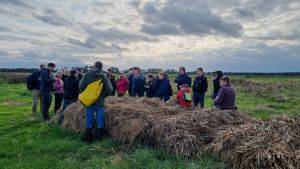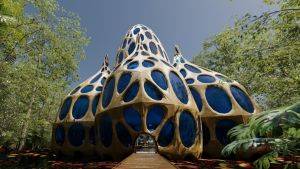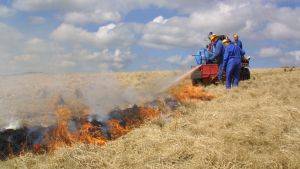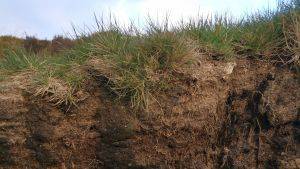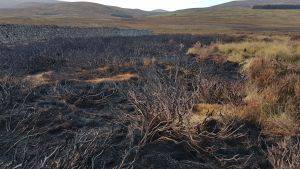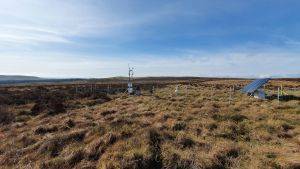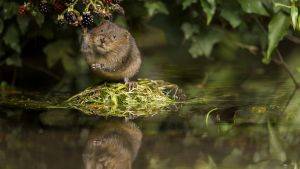At the beginning of June the Exmoor Mires Partnership held two training days for volunteers and members of the public on mire plant identification.
This year, the project was privileged to have Richard Lindsay attend the days, adding his expertise and knowledge of peatlands and helping to put Exmoor into a global context. The first day was a general overview of mire habitats and groups of plant species that can be seen. The second day was a more detailed look at how to identify grasses, sedges and mosses out on site and with the use of hand lenses and microscopes. The aim of these training days is get people engaged in the plants on the moor and to hopefully recruit volunteers to help carry out the vegetation surveys we do every year. By recording the plants along set transects pre and post restoration we aim to use plants as a proxy for whether ditch blocking works have been a success or not: that is if re-wetting is resulting in plant community changes.
Regarding the visit, Richard Lindsay from the Sustainability Research Institute at the University of East London, made the following observations:
"Invited down to Exmoor by the folks of the Exmoor Mires Project to help with their Volunteer Survey-Training Programme, I was intrigued because although I’ve worked on, or visited, peatlands from Shetland to Bodmin, Canada to Tierra del Fuego and the Russian White Sea to Australia’s Queensland, I’d never visited Exmoor.
"Andy Glendinning, Morag Angus and David Smith from the project showed me round when we weren’t training the volunteers, and the most immediately striking things about the Exmoor mires are that they are dominated by Molinia caerulea, and they have experienced a huge degree of domestic or pre-industrial-scale peat cutting. The most obvious signs of peat cutting are long gone, much of this cutting having presumably been undertaken between the Neolithic and pre-war period of the 20th Century, but the effect of this cutting on the large-scale microtopography of many mire expanses continues to be felt, with many depressions and raised banks still obvious to the careful observer.
"The dominance of Molinia, however, although reflecting similar dominance through mid-Wales and on up through the west of Scotland, is likely to have arisen as a result of regular burning during the past 200 years or so. Across some of the larger plateaux (and indeed in many of the former areas of peat cutting) there is a striking abundance of Sphagnum, lending the general surface a texture that is distinctly soft underfoot. Whereas on the slopes, where the drainage is more rapid and the ground is also more susceptible to hot fires, the tussocky nature of the ground bears witness to a mixture of burning, localised drainage attempts and in many cases the effects of peat cutting, which leaves surrounding baulks dry and therefore prone to tussock formation. It was interesting to note that in many cases, when a hummock dominated by non-Sphagnum bryophytes was investigated, it was possible to find remains rich in Sphagnum some 30-40 cm below the hummock top. The story of recent vegetation change across these broad plateau blanket bogs would be very interesting to investigate, particularly as the Exmoor Mires Project is now undertaking a substantial range of blanket bog restoration, mainly focused on blocking of artificial drains.
"The volunteer surveyors, who were a charming and enthusiastic bunch, took to the training by Andy Glendinning, Anne Hand and David Smith with a real sense of determination and dedication, and will hopefully be providing an increasing quantity of evidence for the positive effects of these restoration activities."
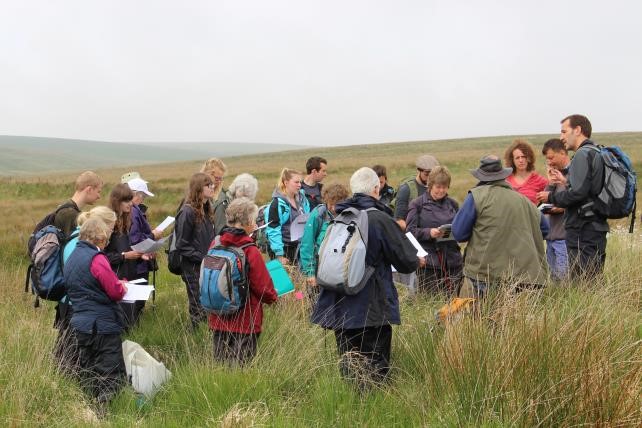
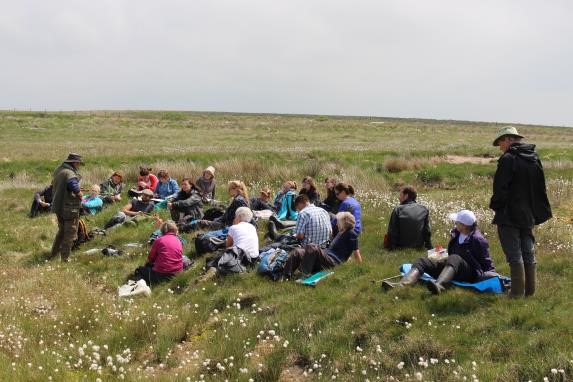
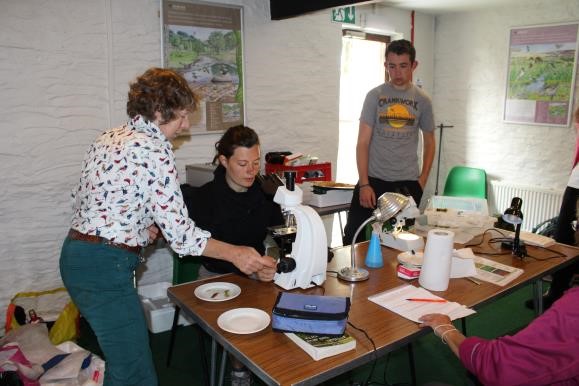
Photos (L-R): The training group; learning about peat formation with Richard Lindsay; studying Sphagnum under the microscope
Update from the Partnership:
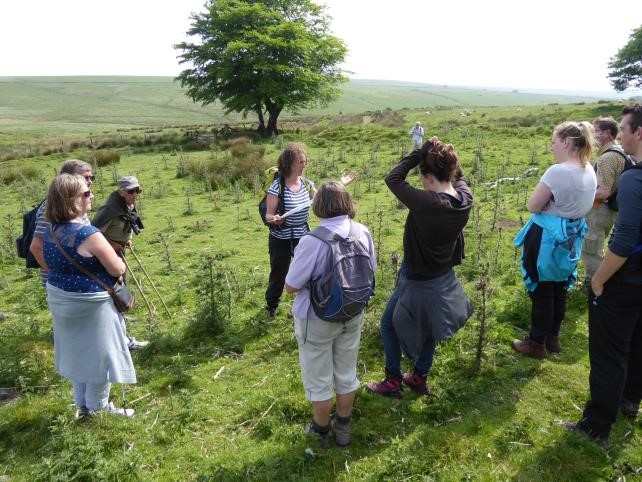 Dr Rose Ferraby, Exmoor Mires Partnership’s Historic Environment Officer, lead a guided walk over a future mire site: “Walk in time: Landscape archaeology at Larkbarrow and Kittuck Meads”.
Dr Rose Ferraby, Exmoor Mires Partnership’s Historic Environment Officer, lead a guided walk over a future mire site: “Walk in time: Landscape archaeology at Larkbarrow and Kittuck Meads”.
The walk took in archaeology ranging from the Mesolithic to the Second World War, including Bronze Age standing stones, a nineteenth century sheep fold, and mortar holes. The walk was well attended by both locals and visitors to the area.

